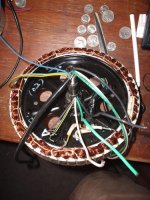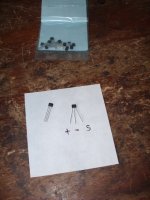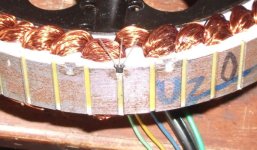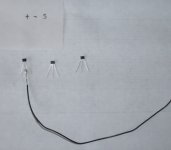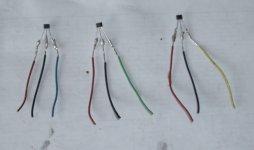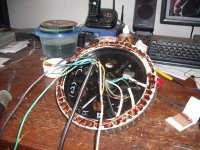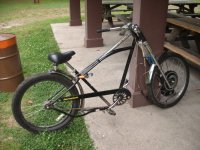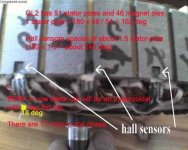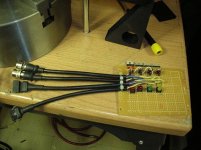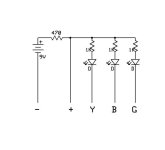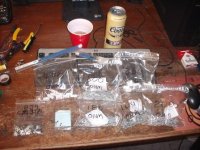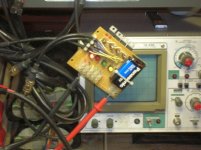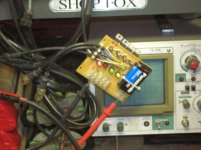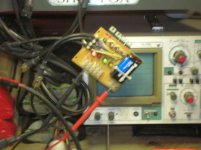Knuckles
10 kW
CHAPTER 1: CHECK SENSORS AND OPEN THE MOTOR
OK. So your motor is DEAD! Bummer. But fixing it ain't so bad. First test the hall sensors just to be sure.
If your sensors don't vary from 0V to 5V they need to be replaced. See Hall Sensor Testing vid ...
[youtube]7m8DA6mmo84[/youtube]
Heck you may want to beef up the phase wires while your at it.
So here is our patient ... The infamous "Black" Grubee motor ...

Open it up ...
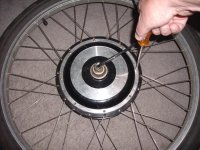
You may have to pry the cover off ...
View attachment 2
Opened at last ...
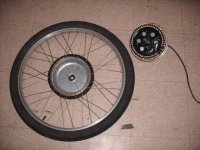
Closeup of the magnets (rotor) ...

Closeups of the coils (stator) ...
http://98.131.176.65/endless-sphere/GEDC0175.JPG
http://98.131.176.65/endless-sphere/GEDC0176.JPG
Pry the other cover off ... http://98.131.176.65/endless-sphere/GEDC0177.JPG
OK. So your motor is DEAD! Bummer. But fixing it ain't so bad. First test the hall sensors just to be sure.
If your sensors don't vary from 0V to 5V they need to be replaced. See Hall Sensor Testing vid ...
[youtube]7m8DA6mmo84[/youtube]
Heck you may want to beef up the phase wires while your at it.
So here is our patient ... The infamous "Black" Grubee motor ...

Open it up ...

You may have to pry the cover off ...
View attachment 2
Opened at last ...

Closeup of the magnets (rotor) ...

Closeups of the coils (stator) ...
http://98.131.176.65/endless-sphere/GEDC0175.JPG
http://98.131.176.65/endless-sphere/GEDC0176.JPG
Pry the other cover off ... http://98.131.176.65/endless-sphere/GEDC0177.JPG


